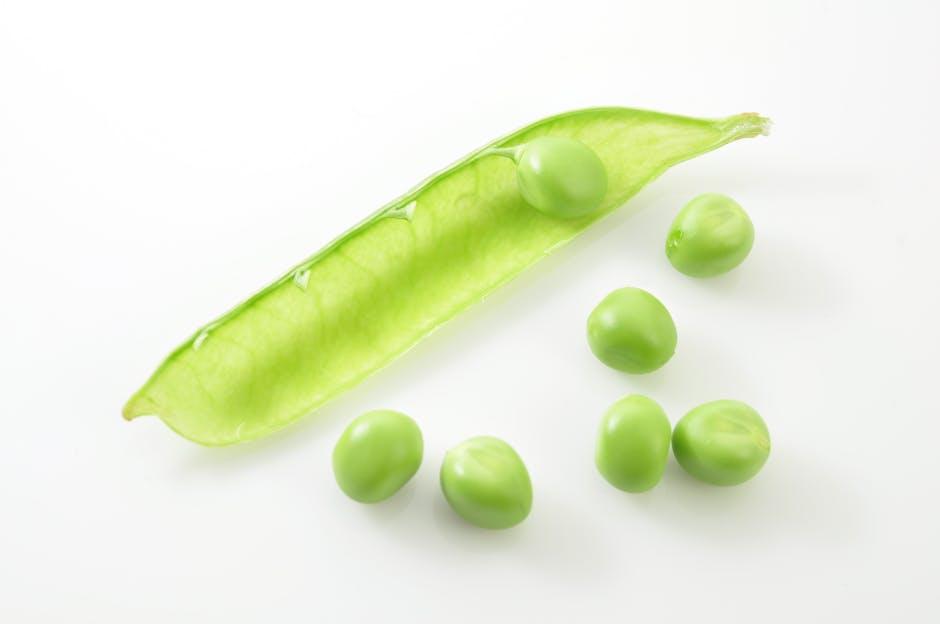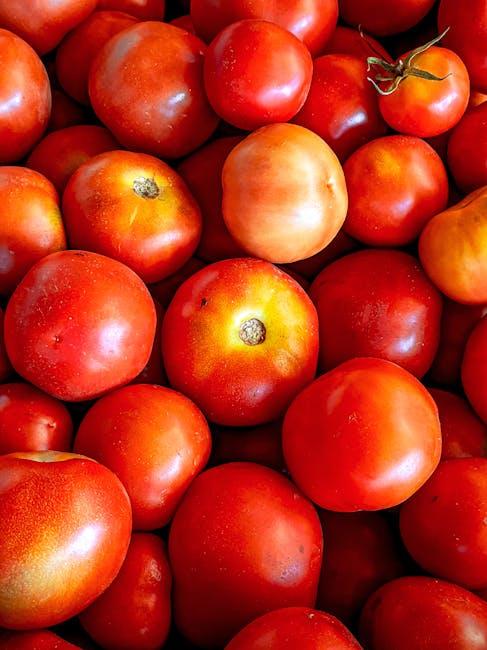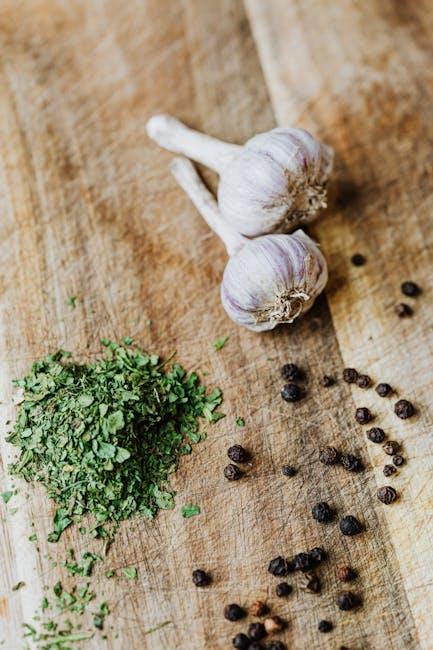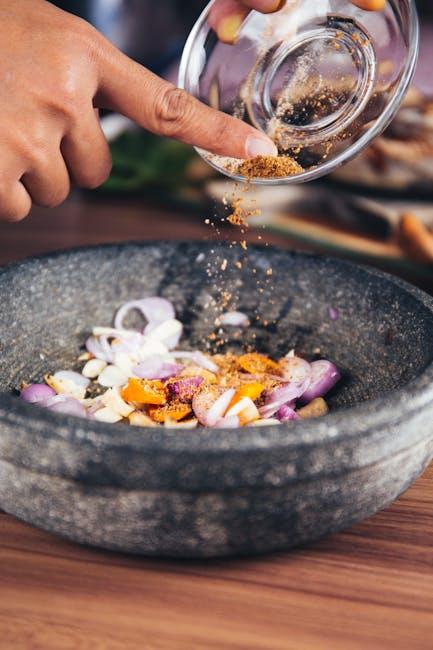In a world that often rushes through the rhythms of daily life, cooking seasonally invites us to pause, breathe, and reconnect with the natural flow of time. Embracing ingredients at their peak not only enriches our meals but also anchors us in the present moment-each bite a reminder of the earth’s current offerings and the cycle of life unfolding outside our doors. This mindful approach to cooking nurtures a deeper awareness, encouraging us to savor the simple, fleeting pleasures that each season uniquely brings. Through the art of seasonal cooking, we find a subtle yet powerful way to cultivate presence in the kitchen and beyond.
Embracing the Rhythm of Nature in Your Kitchen

There’s a unique magic in aligning your meals with the earth’s natural cycles. By choosing ingredients that are ripe and readily available, you immerse yourself in a sensory experience rich with flavor, color, and nourishment. This seasonal approach invites you to slow down and reconnect not only with your food but also with the environment around you. Familiarity deepens as you witness the transformation of produce with each changing season, encouraging creativity and mindfulness in your cooking rituals.
Embracing this practice doesn’t have to be complicated; it can start with simple shifts in your shopping and cooking habits. Consider incorporating the following seasonal staples into your kitchen:
- Spring: Asparagus, peas, radishes, and ramps
- Summer: Tomatoes, zucchini, berries, and fresh herbs
- Fall: Squash, apples, beets, and kale
- Winter: Root vegetables, citrus fruits, and hearty greens
| Season | Signature Produce | Cooking Tip |
|---|---|---|
| Spring | Morels | Sauté lightly to preserve texture |
| Summer | Heirloom Tomatoes | Serve fresh in salads or light sauces |
| Fall | Pumpkin | Roast and blend into soups |
| Winter | Citrus | Use zest to brighten dishes |
Exploring Seasonal Ingredients for Enhanced Flavor and Freshness

Delving into nature’s calendar offers a vibrant palette of flavors that can elevate any dish. By embracing ingredients at the peak of their freshness, you unlock a depth of taste that supermarket staples often lack. Imagine biting into a juicy heirloom tomato in summer, or roasting crisp Brussels sprouts harvested just days before – the difference in flavor is unmistakable. Seasonal produce doesn’t just taste better; it also allows you to connect with your environment and culinary rhythms in a way that’s both mindful and rewarding.
When sourcing ingredients seasonally, consider the benefits these selections bring both in terms of nutrition and sustainability. Here are a few key seasonal ingredients and their prime months:
| Season | Fresh Ingredients | Flavor Profile |
|---|---|---|
| Spring | Asparagus, Radishes, Strawberries | Bright, Crisp, Slightly Sweet |
| Summer | Tomatoes, Zucchini, Peaches | Juicy, Earthy, Lush |
| Fall | Pumpkin, Apples, Beets | Warm, Sweet, Hearty |
| Winter | Kale, Citrus, Root Vegetables | Bold, Tangy, Robust |
- Freshness enhances texture, aroma, and nutrient density.
- Local sourcing supports community farmers and reduces the carbon footprint.
- Experimentation with seasonal produce draws you closer to the natural cycles, inspiring creativity in your kitchen.
Mindful Meal Preparation as a Ritual of Presence

Engaging in meal preparation with intention transforms an everyday task into a moment of calm and connection. When you choose ingredients that are in harmony with the current season, you’re not just cooking-you’re participating in the natural rhythm of life. This practice encourages a deeper awareness of the present moment, inviting you to savor each chop, stir, and simmer rather than rushing through the process. The kitchen becomes a sanctuary where your senses awaken to the vibrant colors, aromas, and textures of seasonal produce, grounding you fully in the here and now.
To cultivate this mindful experience, consider incorporating these simple rituals:
- Slow down: Pause before starting to appreciate the ingredients and their origins.
- Engage your senses: Notice the sounds of chopping, the feel of fresh herbs, the scent of spices.
- Practice gratitude: Reflect on the journey of the food from farm to table.
- Limit distractions: Turn off devices and focus entirely on the cooking process.
| Season | Typical Ingredients | Mindful Cooking Tip |
|---|---|---|
| Spring | Asparagus, Peas, Radishes | Enjoy the vibrant greens and fresh crunch. |
| Summer | Tomatoes, Zucchini, Berries | Focus on the sweet juiciness and bright colors. |
| Autumn | Pumpkins, Apples, Brussels Sprouts | Connect with the warming spices and earthy flavors. |
| Winter | Root Vegetables, Citrus, Kale | Appreciate the hearty textures and zesty notes. |
Practical Tips for Sourcing and Storing Seasonal Produce

To truly embrace the essence of the seasons in your kitchen, start by connecting with local farmers’ markets or community-supported agriculture (CSA) programs. These sources offer fresher, often organically grown produce that’s harvested at its peak ripeness. When shopping, look for vibrant colors and firm textures, as these are signs of freshness. Don’t hesitate to ask vendors about their harvest times and storage recommendations-this little exchange can deepen your connection to the land and your food. Remember, seasonal produce fluctuates, so treating yourself to a weekly list of what’s available can inspire creative, ever-changing menus.
Storing your seasonal finds properly is just as vital to preserving their flavor and nutrients. Here are some smart guidelines to extend freshness:
- Leafy greens: Wrap in a damp cloth and refrigerate in a breathable container.
- Root vegetables: Keep in a cool, dark place away from moisture to prevent sprouting.
- Berries and soft fruits: Store in the fridge without washing until ready to eat.
Below is a quick reference table that guides you on storage duration based on the produce type:
| Produce Type | Optimal Storage Method | Expected Freshness |
|---|---|---|
| Tomatoes | Room temperature, out of direct sunlight | 3-5 days |
| Apples | Refrigerated in plastic bag | 3-4 weeks |
| Carrots | Refrigerated in perforated bag | 2-3 weeks |
Key Takeaways
Embracing the rhythm of the seasons through your kitchen not only nurtures your body but also roots you more deeply in the moment. Cooking seasonally invites you to slow down, savor the bounty nature offers, and reconnect with the simple joy of fresh ingredients. By aligning your meals with the changing landscape outside your window, you cultivate a mindful practice that transcends nourishment-transforming everyday cooking into a quiet celebration of time, place, and presence. So next time you chop a carrot or toss a leafy green, let the season guide you-and find yourself truly here, now.











